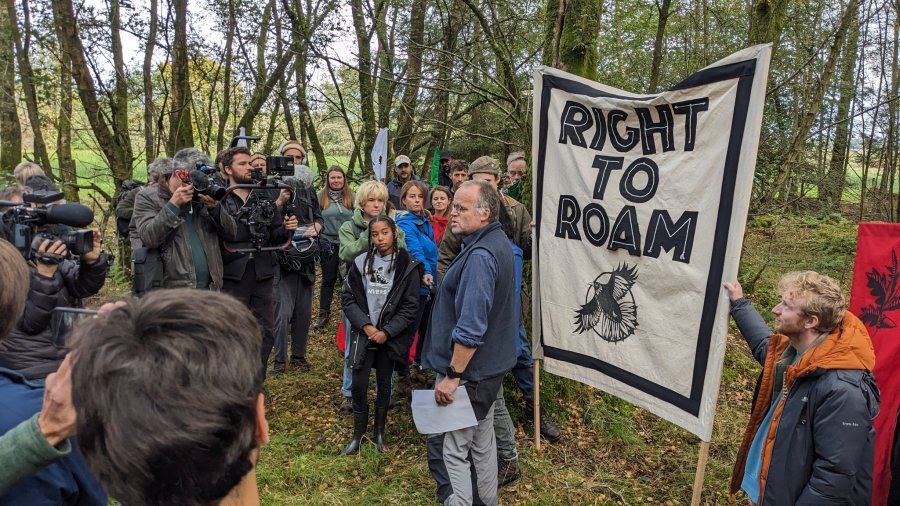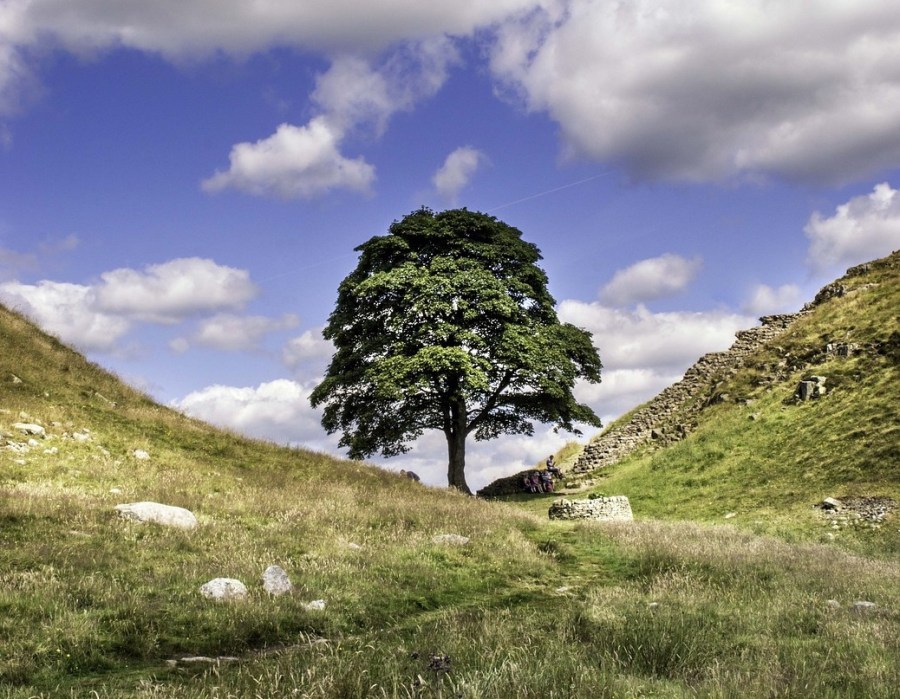The tree that stood for almost three centuries in Sycamore Gap was more than a landmark. It was an icon. A celebrity, a friend, a sentinel, a memorial, a shrine, a secret-keeper, a witness.
Main image: the iconic Sycamore Gap, before the felling of the tree | Photo: Pixabay
The sickening shock of loss has been felt far and wide. Many people, me included, lamented the ecological and social disconnection which we imagined must have contributed to such wanton destruction. I’m not so sure now. Without speculating too much, if the perpetrator was local it is almost impossible to believe this was an act of mindless vandalism. Whoever wielded the saw and why, that tree meant something to them. The assault on it reads now more as an act of desperation or defiance. Is it possible that such violence could have seemed some way proportionate to a pain they needed the world to notice?
We need nature
The wider anguish is both genuine and disproportionate. Other trees are felled daily by the thousand in England, often entirely unremarked. Somewhere close to where we all live will be a tree of comparable stature and grace. Or if not a tree, then a crag; a river; a view of huge sky; a wooded hollow; a cave; a spring: a place of common, everyday wonder. Such places exist all over our land, but getting to them is another matter, given that we have access to 8% of land. 85% of English woodlands have no public access. So instead, we saved our devotion for this one – accessible as it was, and so photographed and painted we could connect with it vicariously. It became an avatar for the kind of relationship with place we crave, and losing it needled a much bigger wound.
The UK is, according to a study by the Swedish Academy of Sciences, the most nature-disconnected nation in Europe. We also ranked lowest in wellbeing, and the Biodiversity Intactness Index compiled by the Natural History Museum placed England 12th from bottom out of all 240 nations and territories in the world. These grim statistics are intrinsically linked. We don’t just need access to nature, we need a revolution in our relationship with it. But we’re starting to see what does happen when people do care, in the wave of public outrage over river health led by wild swimmers, paddleboarders and anglers – people for whom the damage is personal.
Enclosure and exclusion
For the Romans, Hadrian’s Wall, which the Sycamore Gap tree straddled, marked the edge of civilisation. But their civilising mission had involved the slaughter and enslavement of hundreds of thousands of Britons and made client tribes of others. They torched the sacred groves of the druids, whose close bond with the land presented a clear threat. It was a conquest that gave northern European peoples, and most especially the mixed bag who became the British and most specifically the English, a blueprint for empire-building whose trauma we internalised, refined and enacted ourselves.
I love the country to its bones, but those bones are where some of our worst wounds are. Our severance from the land has been a protracted affair – after the Romans, the Anglo-Saxons, Vikings and Normans all claimed land in turn, and the latter created a system of law based almost entirely on protecting ownership of that land, though common folk still had rights to access it.
Enclosure and exclusion came later, predominantly in the 18th and 19th centuries, but it continues to this day, with ever more fences, ever more signs, ever more demonisation of ‘the public’. At every turn we’re told we can’t be trusted, that we’ll trash the places we go. But why is our wildlife really in freefall? It is not the wild swimmer that fills rivers with raw sewage or fertiliser; it is not the hiker that released tens of millions of non-native species into the wild every year; it is not the picnicking family that fogs whole landscapes with insecticides.

Right to Roam campaigners on the England-Scotland border. Photo: Lewis Winks
Crossing borders
Just four days before the Sycamore Gap tree fell, I hiked with other activists from the Right to Roam campaign to another iteration of the historic border between England and Scotland. Not the Roman one, but the medieval Scots’ Dike – a ditch and bank constructed in 1552. Two bands of roamers approached on foot, from the English side along farm tracks and field edges, from the Scots side fording a burn and climbing though small pastures.
Neither group used public rights of way (or core paths as they are called in Scotland), but only one was trespassing. While straddling the dike our left feet (in England) were unlawful, our right feet (in Scotland) were merely exercising a right of responsible access which has existed since 2003. We stood together among the mossy trunks in a place where boots so seldom tread, and for a few minutes the air there thrummed with new understanding, echoed with song and laughter, became rich in meaning.
I can’t tell you with certainty that a right to roam in England would have saved the Sycamore Gap tree. But it would help us fall for other trees and other precious places. It might ultimately make guardians of us all.
Amy-Jane Beer is a naturalist, author, and campaigner for Right to Roam. Her latest book, The Flow, has won the 2023 Wainwright prize for nature writing.








